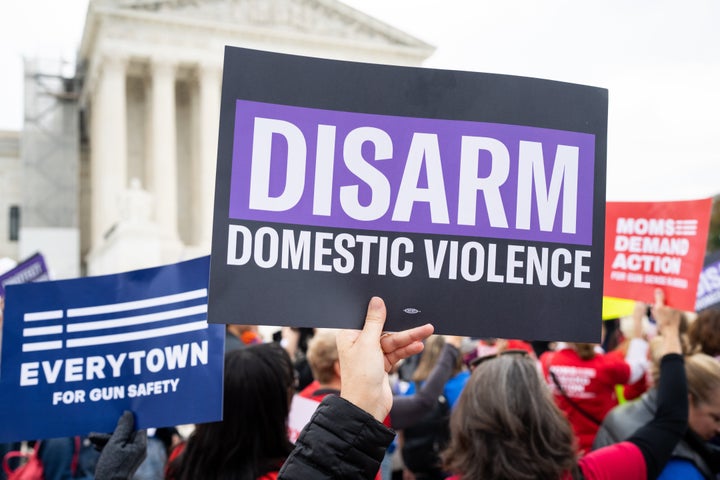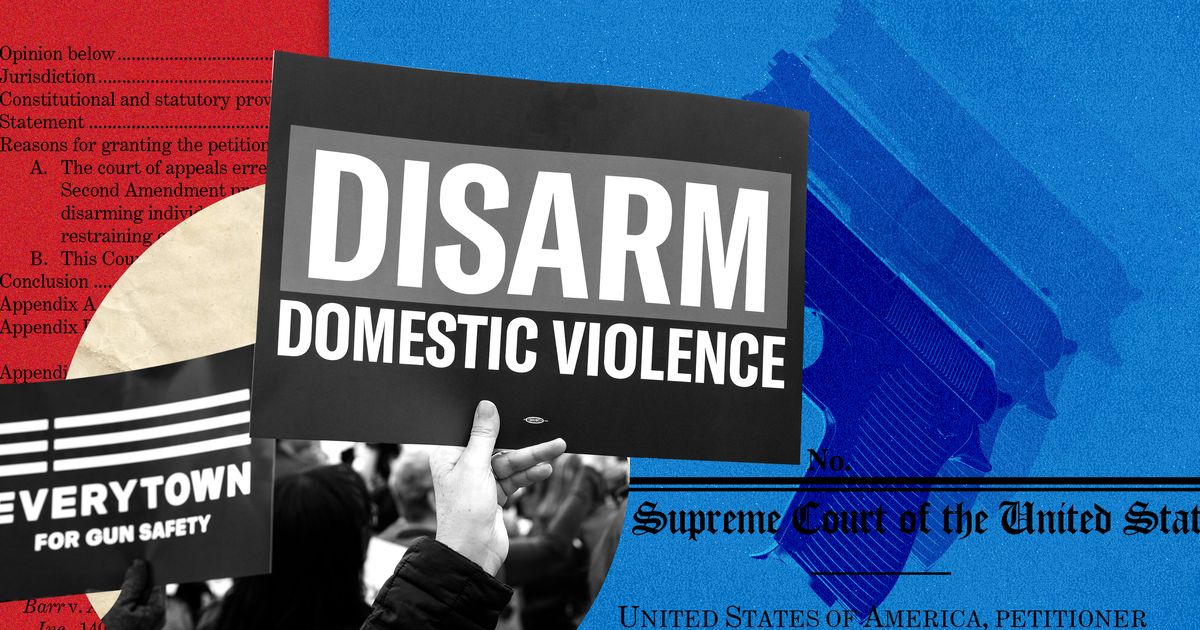The federal government can continue to limit domestic abusers’ gun rights, according to a landmark ruling issued by the U.S. Supreme Court on Friday that helps clarify the conservative-majority court’s thinking on firearm restrictions.
In an 8-1 decision, the Supreme Court affirmed that the federal government can temporarily restrict a person’s right to possess firearms without violating the Second Amendment. Only Justice Clarence Thomas dissented.
“Our tradition of firearm regulation allows the Government to disarm individuals who present a credible threat to the physical safety of others,” Justice John Roberts wrote in the majority’s ruling.
The case of United States v. Rahimi emerged as a high-profile test of how far the Supreme Court was willing to go in expanding gun rights after its sweeping reinterpretation of the Second Amendment two years ago directed courts to stop considering public safety when assessing the constitutionality of firearm restrictions.
Under the Supreme Court’s new doctrine, gun restrictions are only constitutional when they fit within a centuries-old historical tradition of firearm regulation. Public defenders representing Rahimi had argued that the United States did not develop a legal tradition of disarming people for domestic abuse until the 20th century.

Bill Clark/CQ-Roll Call via Getty Images
But the ruling found that the law barring domestic abusers from possessing guns fit within a long tradition of keeping guns away from dangerous people. State constitutions at the time of the nation’s founding allowed governments to restrict firearm possession from people who posed a threat of violence to others under criminal laws, the ruling noted.
The ruling also pointed to surety laws, which required someone with a history of violence to post a bond that could be revoked if they committed new crimes. Some states used surety laws as a way to disarm people with a history of violence. Restrictions against brandishing weapons publicly to terrorize people have also long been part of American law, the ruling says.
“Taken together, the surety and going armed laws confirm what common sense suggests: When an individual poses a clear threat of physical violence to another, the threatening individual may be disarmed,” Roberts wrote.
Thomas took the lonely position that only an exact match for the 1994 federal law barring those subject to protective orders would survive the court’s new Second Amendment standard.
“Not a single historical regulation justifies the statute at issue,” Thomas wrote.
The ruling comes as a relief to gun reformers, who had viewed the decision by the U.S. Court of Appeals for the 5th Circuit in the Rahimi case as a disturbing precedent that privileged the gun rights of abusers over the safety of their victims.
“This is a win for women, children and anyone who has expressed domestic abuse,” former U.S. Rep. Gabrielle Giffords (D-Ariz.), who now runs a group to combat gun violence, wrote in a statement. “We know that firearms make domestic abuse situations significantly more deadly, and firearms’ effects on women’s safety is a crisis. This ruling is a small step in the fight to stop violence against women.”
A court in Tarrant County, Texas, placed Zackey Rahimi under a protective order on Feb. 5, 2020, after he assaulted his former girlfriend. Prosecutors accused him of shooting guns in public in at least six separate instances while subject to the protective order — including once at a woman he allegedly lured into a parking lot, two instances of alleged road rage and one instance in which he allegedly fired a rifle into someone’s home.
When police investigating those shootings searched Rahimi’s room on Jan. 14, 2021, they discovered a semiautomatic rifle under the bed and a pistol with an extended magazine on the nightstand, along with a copy of the protective order. A 1994 federal law makes it a felony to possess firearms while subject to a protective order in a domestic violence case.
Rahimi, facing an open-and-shut case, pleaded guilty.
But in 2022, Justice Clarence Thomas laid out a new constitutional standard for assessing gun restrictions when the Supreme Court ruled on the case of New York State Rifle and Pistol Assn. v. Bruen. The new standard directed courts to judge the constitutionality of gun laws by narrowly focusing on whether a given restriction fit within a history of regulation dating back to some time between the signing of the Bill of Rights in 1789 and the end of the Civil War in 1865.
The ruling set off dozens of Second Amendment challenges to long-standing gun laws, many of which are still playing out.
But the Supreme Court’s lopsided ruling Friday made gun laws appear far less vulnerable than they have since the post-Bruen legal onslaught.
Roberts warned that “some courts have misunderstood the methodology of our recent Second Amendment cases,” referring to a string of decisions dating back to 2008, when the high court established that the right to bear arms extended to individuals rather than just the militias that the Bill of Rights references in its text.
Rahimi’s was among the most highly publicized decisions after the U.S. Court of Appeals for the 5th Circuit ruled that the Second Amendment protected his right to bear arms despite allegedly using them to commit several other crimes.
The decision set off a firestorm of criticism from gun law reformers and advocates for victims of domestic violence, who feared that overturning the 1994 law would empower abusers.
Gun rights groups, which normally challenge firearm restrictions they oppose in civil court, had only reluctantly taken a stand on the Rahimi case, featuring a criminal defendant accused of multiple violent crimes. The National Rifle Association argued in an amicus brief last year that courts should strip Rahimi of his gun rights based on criminal convictions alone, rather than a protective order related to domestic violence.
While that argument failed, Randy Kozuch, the executive director of the NRA’s Institute for Legislative Action, played down the impact of the Supreme Court’s ruling Friday.
“The Supreme Court’s narrow opinion offers no endorsement of red flag laws or of the dozens of other unconstitutional laws that the NRA is challenging across the country that burden the right of peaceable Americans to keep and bear arms,” Kozuch wrote in a statement. “This decision holds only that an individual who poses a clear threat of violence may be temporarily disarmed after a judicial finding of dangerousness.”
The decision means that Rahimi will almost surely face a significant federal prison sentence, in addition to possible jail time for his alleged state crimes.
Rahimi’s state cases have remained pending while the Supreme Court considered the issue. He also faces a state felony charge for possession of fentanyl.
Sebastian Murdock contributed reporting.







